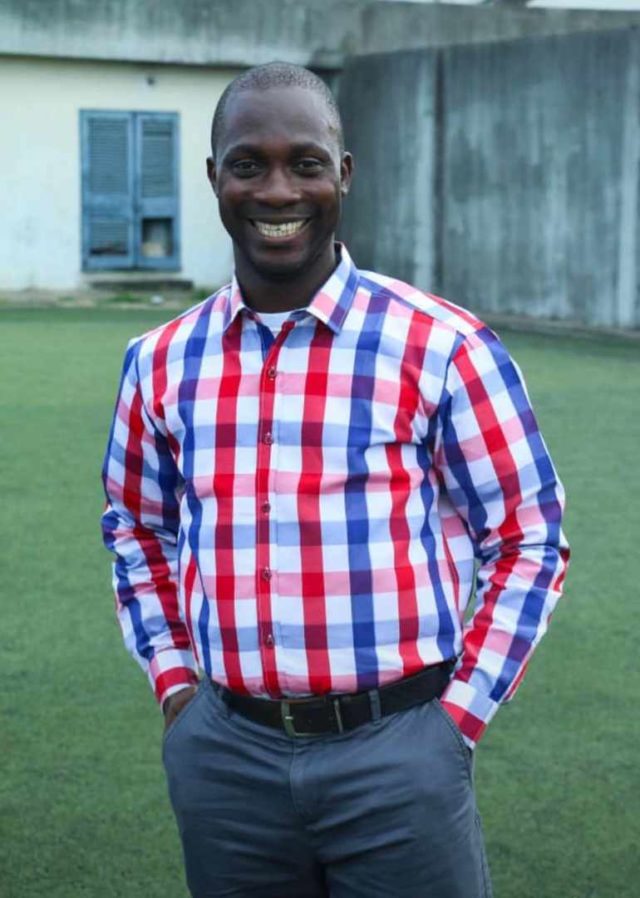“The pitch is second to none when emphasizing the good performance of a footballer on the field of play,” said Dr. Kolade Kolapo, a respected medical professional from the General Outpatient Department (GOPD) of Codic Specialist Medical Center.
Read Also: Sex And Sports: Lessons For Nigerian Athletes
 While synthetic pitches offer several benefits, Dr. Kolade also highlights the challenges and hidden costs that come with their installation and maintenance. His insights provide a balanced view on the complexities of synthetic turf and its impact on players.
While synthetic pitches offer several benefits, Dr. Kolade also highlights the challenges and hidden costs that come with their installation and maintenance. His insights provide a balanced view on the complexities of synthetic turf and its impact on players.
The Allure and Reality of Synthetic Pitches
Synthetic pitches have grown in popularity due to their promise of low maintenance and year-round usability. However, beneath these advantages lie significant drawbacks affecting both installation and player health.
Installation Complexities
 The installation of synthetic pitches is far from straightforward. “To install artificial turf, it’s essential to create a surface that is porous, flat, and has a base that allows good drainage,” explained Dr. Kolade. Any oversight can lead to stagnant water, unpleasant odors, and compromised turf performance. These complexities mean that while DIY installation might seem like a cost-saving measure, professional help is often essential. “It’s best to leave the installation process to the professionals if you’re not confident doing it yourself,” he advised.
The installation of synthetic pitches is far from straightforward. “To install artificial turf, it’s essential to create a surface that is porous, flat, and has a base that allows good drainage,” explained Dr. Kolade. Any oversight can lead to stagnant water, unpleasant odors, and compromised turf performance. These complexities mean that while DIY installation might seem like a cost-saving measure, professional help is often essential. “It’s best to leave the installation process to the professionals if you’re not confident doing it yourself,” he advised.
Financial Implications
The financial burden of synthetic pitches starts with the initial cost, which can be substantial. “The initial cost of your synthetic turf can start to creep up depending upon the range of turf you go with,” Dr. Kolade noted. High-quality synthetic turf, along with necessary accessories like weed membranes, fixing nails, and adhesives, can quickly add up. Budget-conscious buyers must plan meticulously to avoid unforeseen expenses.
Impact on Player Health
Beyond installation and cost, the effects on players, especially footballers, are significant. “Synthetic pitches generally have lower shock absorption than natural grass,” said Dr. Kolade, which can lead to increased foot pain and discomfort during training and matches. Over time, the infill material in synthetic pitches can compact, further hardening the surface and increasing the risk of injuries. “Running, jumping, and landing are affected by the hardness of artificial grass,” he added.
Friction is another critical concern. While some friction is essential for making quick directional changes, excessive friction can impose undue stress on players’ muscles, bones, and joints. Research indicates that the torque generated between a player’s shoe and the synthetic surface during abrupt movements can lead to ligament injuries, particularly in the knees and ankles. “Heavier players suffer more torque than lighter weight players,” Dr. Kolade pointed out, increasing their risk of injury.
Case Studies: Enyimba International Stadium and Remo Stars Stadium
Despite these challenges, some synthetic pitches stand out for their quality and modern infrastructure. The Enyimba International Stadium and Remo Stars Stadium in Nigeria are prime examples. Both stadiums feature hybrid synthetic pitches that meet international standards, earning certification from the Confederation of African Football (CAF). These venues are not only known for their excellent playing surfaces but also for their comprehensive facilities, including ample parking, advanced emergency response systems, and a serene environment that enhances the overall experience for players and spectators.
Conclusion
While synthetic pitches offer durability and lower maintenance, their installation complexities, financial costs, and potential health risks for players cannot be overlooked.
“Understanding these hidden costs and risks can help stakeholders make more informed decisions,” concluded Dr. Kolade. Balancing these factors is crucial to ensure both the longevity of the pitches and the safety and performance of the athletes who use them.









